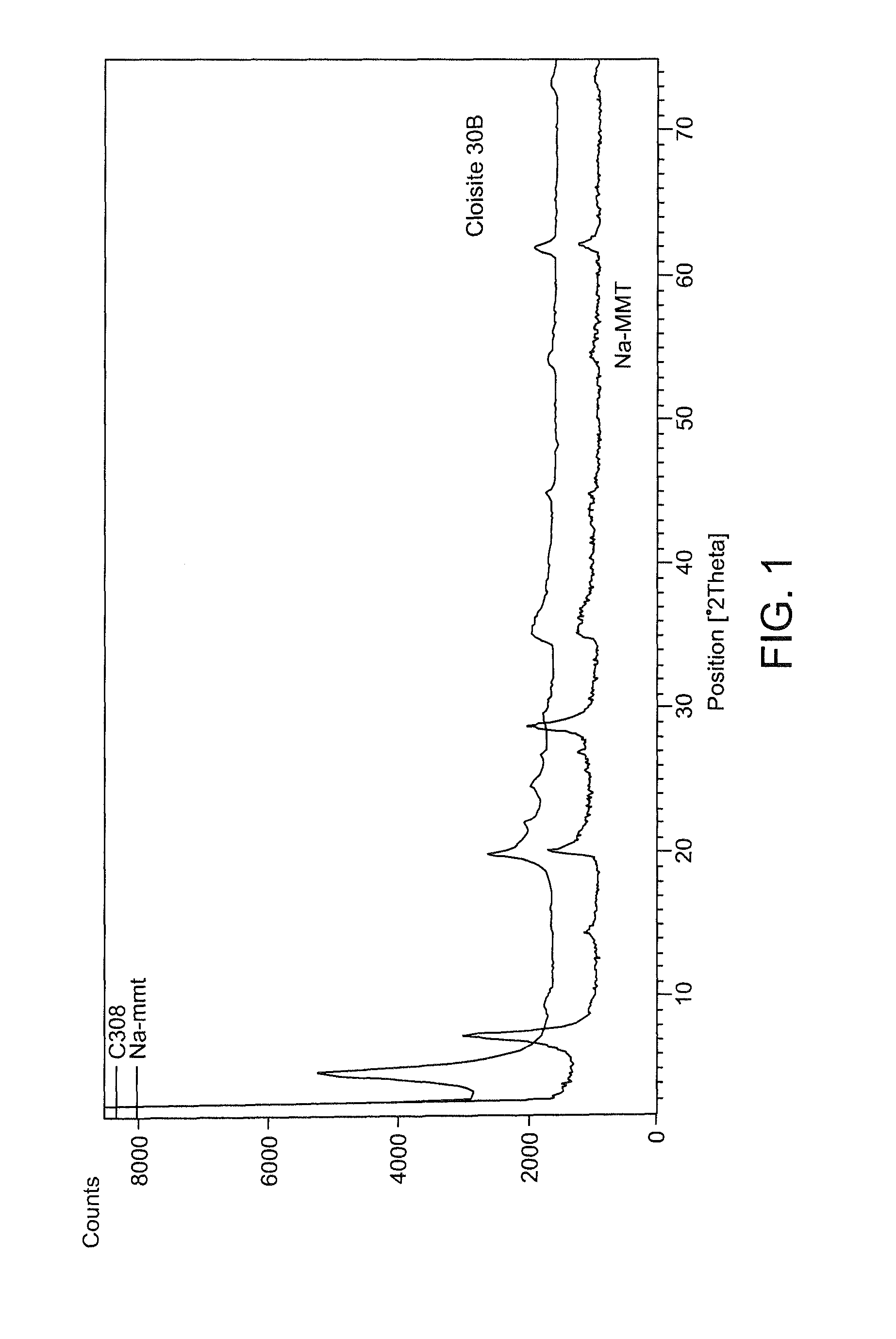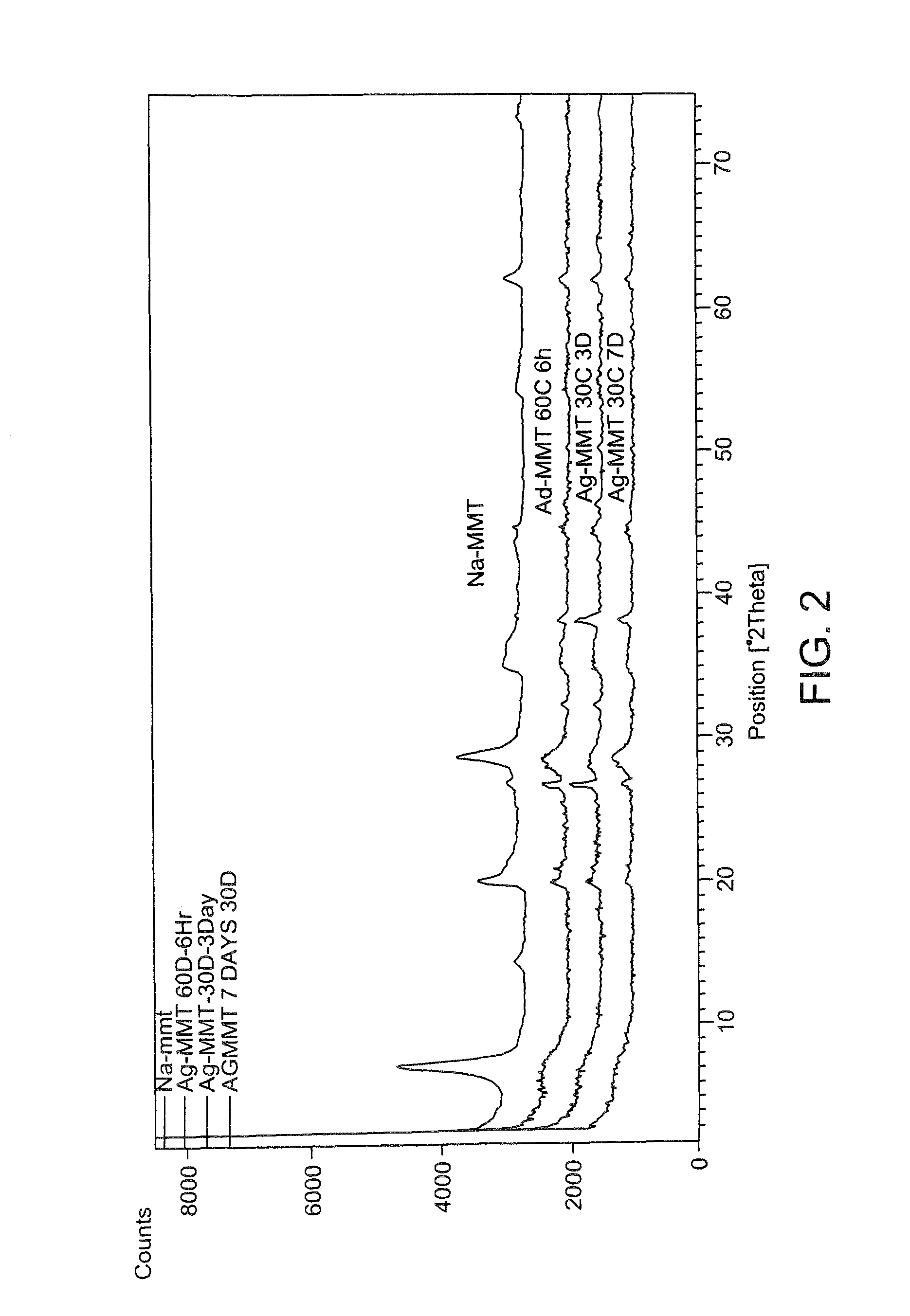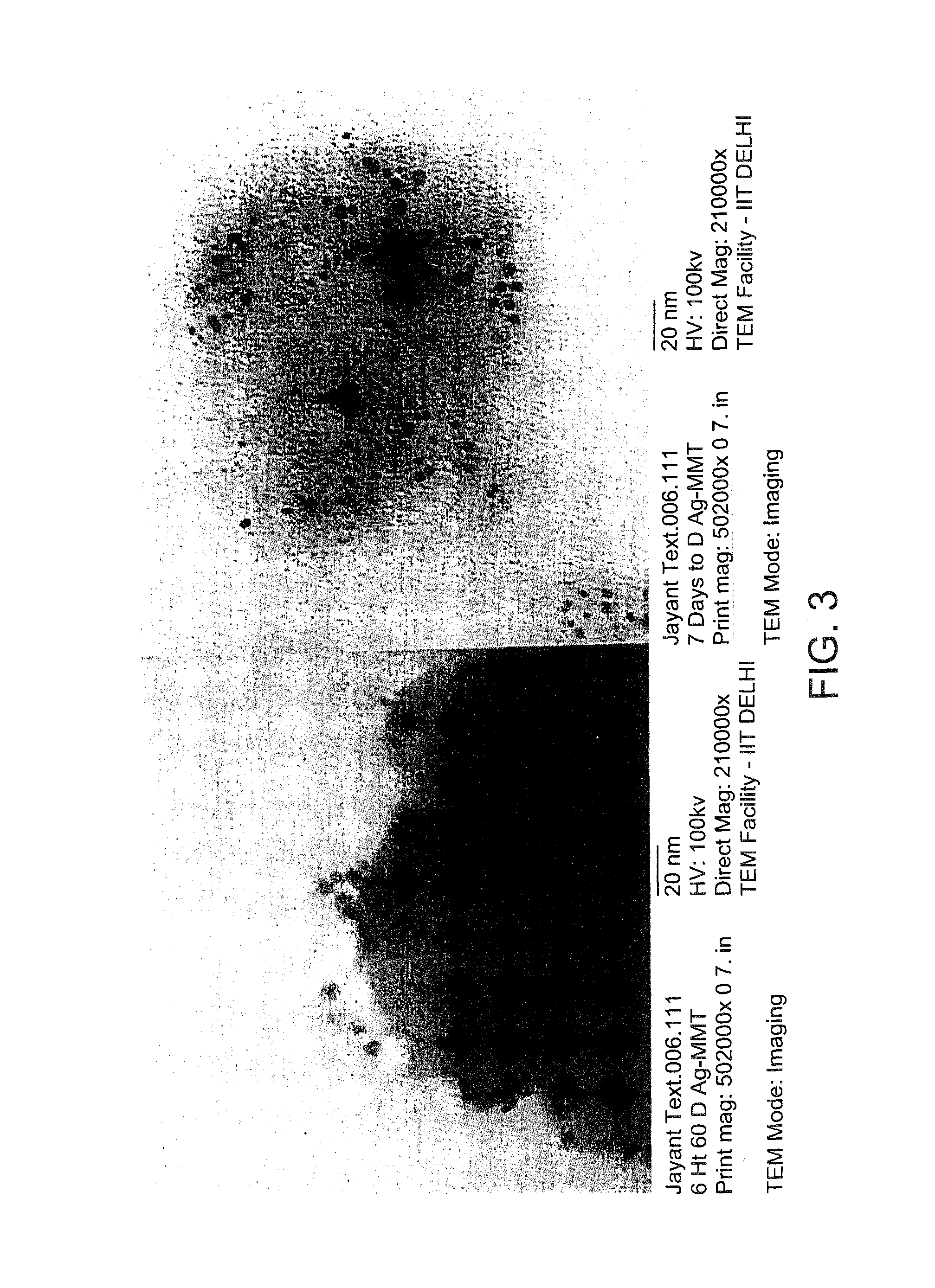Antimicrobial nanocomposite compositions, fibers and films
a technology of nanocomposite compositions and nanocomposite materials, applied in the direction of textiles and paper, aluminium/calcium/magnesium active ingredients, fibre chemical features, etc., can solve the problems of affecting the durability of finished fabrics, affecting the hygiene and fabric deterioration, antimicrobial compounds are released very fast, etc., to achieve superior thermal stability, inhibit the growth of bacteria, and easy to incorporate into polymers
- Summary
- Abstract
- Description
- Claims
- Application Information
AI Technical Summary
Benefits of technology
Problems solved by technology
Method used
Image
Examples
Embodiment Construction
[0035]In the present disclosure, modified MMT clay has been prepared using silver, copper salts and Sulphanilamide drug with an aim to achieve higher loadings of Ag+, Cu++ and Sulphanilamide drug cations in the clay through an ion exchange reaction. The process parameters such as temperature, time and chemical treatment of clay were varied to obtain maximum loading of Ag+, Cu++ and Sulphanilamide drug cations on the montmorillonite. The antimicrobial activity of the modified clays as well as the commercial Cloisite clay 30B was assayed against Gram positive bacteria Staphylococcus aureus and Gram negative bacteria Escherichia coli.
[0036]In the present disclosure, silver, copper and Sulphanilamide intercalated clay is used to prepare nylon 6 / clay nanocomposite fibers and films for antimicrobial activity. The quaternary ammonium compound modified commercial clay Cloisite 30 B has also been used to prepare nylon 6 / clay nanocomposite fibers and films. The structure and morphology of th...
PUM
| Property | Measurement | Unit |
|---|---|---|
| particle size | aaaaa | aaaaa |
| temperature | aaaaa | aaaaa |
| elongation at break | aaaaa | aaaaa |
Abstract
Description
Claims
Application Information
 Login to View More
Login to View More - R&D
- Intellectual Property
- Life Sciences
- Materials
- Tech Scout
- Unparalleled Data Quality
- Higher Quality Content
- 60% Fewer Hallucinations
Browse by: Latest US Patents, China's latest patents, Technical Efficacy Thesaurus, Application Domain, Technology Topic, Popular Technical Reports.
© 2025 PatSnap. All rights reserved.Legal|Privacy policy|Modern Slavery Act Transparency Statement|Sitemap|About US| Contact US: help@patsnap.com



